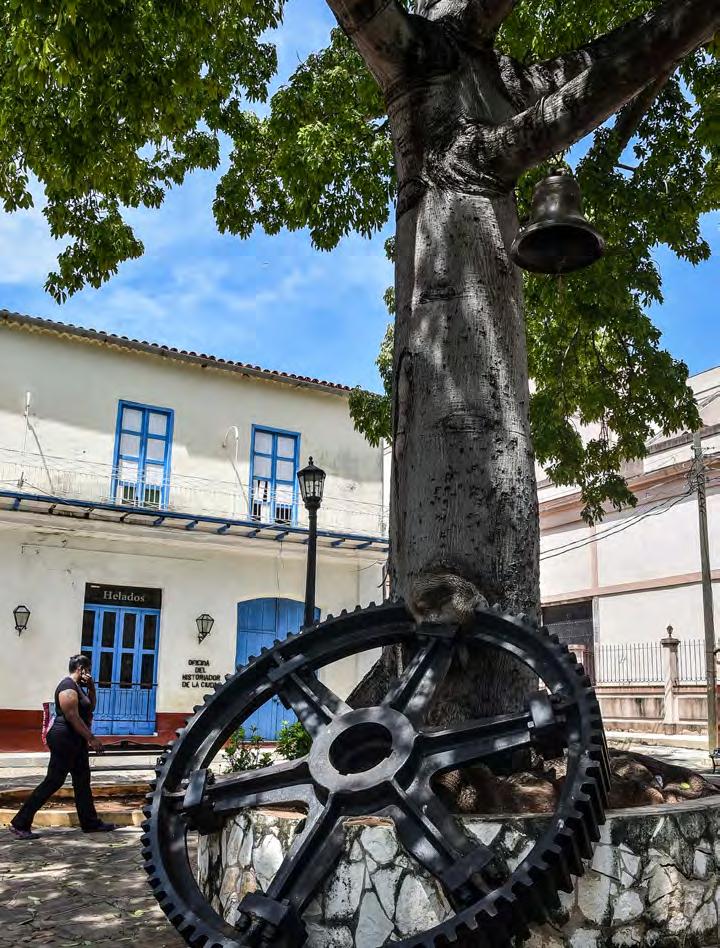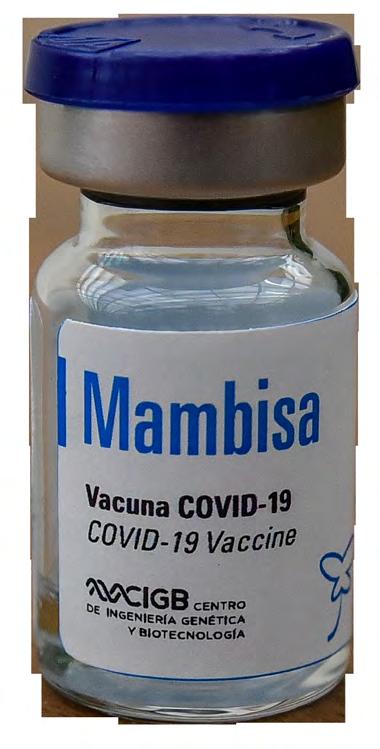
11 minute read
CUBA EN LA SALUD 30 RECORRIENDO EL CAIMÁN
CUBAEN LA SALUD Textos/Texts: Bienvenidos Fotos/Photos: Bienvenidos-Archivo
El Centro de Ingeniería Genética y Biotecnología solicitará el autorizo de uso de emergencia del candidato vacunal anti COVID-19 Mambisa, al concluir los informes del ensayo clínico Baconao, que evalúa su efecto y seguridad como dosis de refuerzo. En este ensayo multicéntrico y aleatorizado, participaron cerca de 3 mil trabajadores del Turismo y de la Salud, después de cinco meses de recibir la última dosis de Abdala o Mambisa. Mambisa, primer candidato de uso nasal en iniciar estudios clínicos en humanos, basado en antígenos proteicos producidos con tecnología muy segura y eficaz, no contiene Tiomersal, una ventaja para los alérgicos al mismo.
Mambisa emergency use authorization will be requested
The Center for Genetic Engineering and Biotechnology will request the authorization of emergency use of the anti-COVID-19 vaccine candidate Mambisa, as soon as the reports of the Baconao clinical trial, which evaluates its effect and safety as a booster dose, are concluded. In this multicenter, randomized trial, nearly 3,000 tourism and healthcare workers participated after five months of receiving the last dose of Abdala or Mambisa. Mambisa, the first candidate for nasal use to initiate human clinical studies, based on protein antigens produced with very safe and effective technology, does not contain thiomersal, an advantage for those allergic to it.
APRUEBAN REGISTRO SANITARIO CONDICIONADO DE LA NEUROEPO PARA EL ALZHÉIMER LEVE Y MODERADO
El Centro para el Control Estatal de Medicamentos, Equipos y Dispositivos Médicos de Cuba aprobó un Registro Sanitario Condicionado de la NeuroEpo para la indicación de la enfermedad de Alzheimer leve y moderada. Para la concepción del NeuroEpo, los científicos del Centro de Ingeniería Molecular, tomaron en cuenta el acelerado proceso de envejecimiento de la población, y la prevalencia del síndrome demencial en adultos mayores. Los resultados del estudio de NeuroEpo han demostrado seguridad y eficacia, mejoras en los índices de deterioro cognitivo, y una tendencia a detener la progresión de la dolencia; es un fármaco de aplicación nasal, cómodo y sencillo de utilizar.
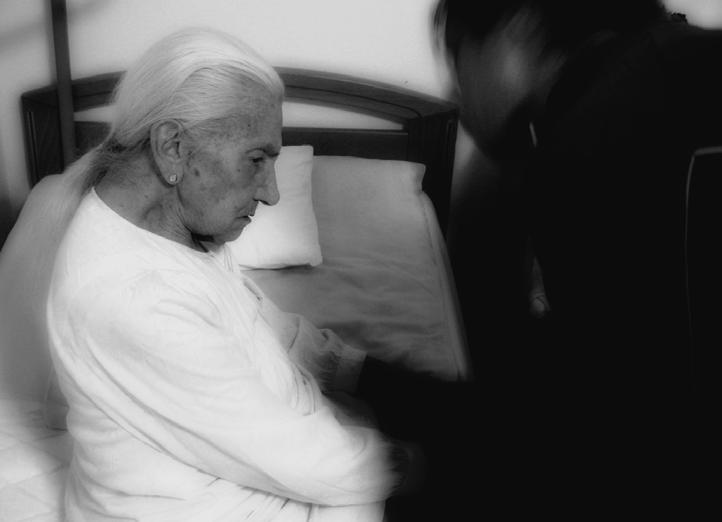
Conditional Health Registration of NeuroEpo for mild and moderate Alzheimer's disease approved
Cuba's Center for State Control of Medicines, Equipment and Medical Devices approved a Conditional Health Registration of NeuroEpo for the treatment of mild and moderate Alzheimer's disease. For the design of NeuroEpo, scientists from the Molecular Engineering Center took into account the accelerated aging process of the population and the prevalence of dementia syndrome in senior citizens. The results of the NeuroEpo study have demonstrated safety and efficacy, improvements in the rates of cognitive impairment, and a tendency to slow the progression of the disease; it is a nasal application drug, convenient and simple to use.
ATENCIÓN A TRASTORNOS DEL NEURODESARROLLO EN NIÑOS Y NIÑAS TRAS LA COVID-19
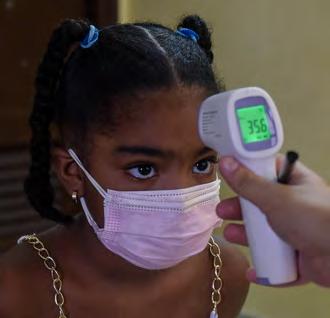
La Convención Internacional Cuba-Salud 2022 y su Feria Comercial Salud para Todos, tendrá lugar entre los días 17 y 21 del mes de octubre del presente año, en el Palacio de Convenciones de La Habana bajo el lema «Salud Universal, como parte de la Agenda Salud 2030 en el escenario post COVID-19». Sus propósitos esenciales son exponer y debatir los modelos de enfrentamiento a la COVID-19 a nivel global, así como intercambiar experiencias sobre las temáticas más actualizadas del sector. La Feria Comercial Salud para Todos 2022, sesionará en el recinto ferial capitalino Pabexpo y reunirá representantes de empresas, universidades y firmas especializadas del patio y foráneas, interesados en establecer alianzas comerciales y fomentar las relaciones en este ámbito.
Attention to neurodevelopmental disorders in children after COVID-19
The Comprehensive Care Service for Neurodevelopmental Disorders of the Borrás-Marfán pediatric hospital in Havana is developing actions for the treatment of children after the COVID-19 health emergency. This project addresses the fact that at this stage infants have been deprived of their usual educational, recreational and social activities, and have had an excessive exposure to screens. The research is progressing in the organization of a national network with four regional centers, and it is hoped that this care will be extended to all the provinces of the country.
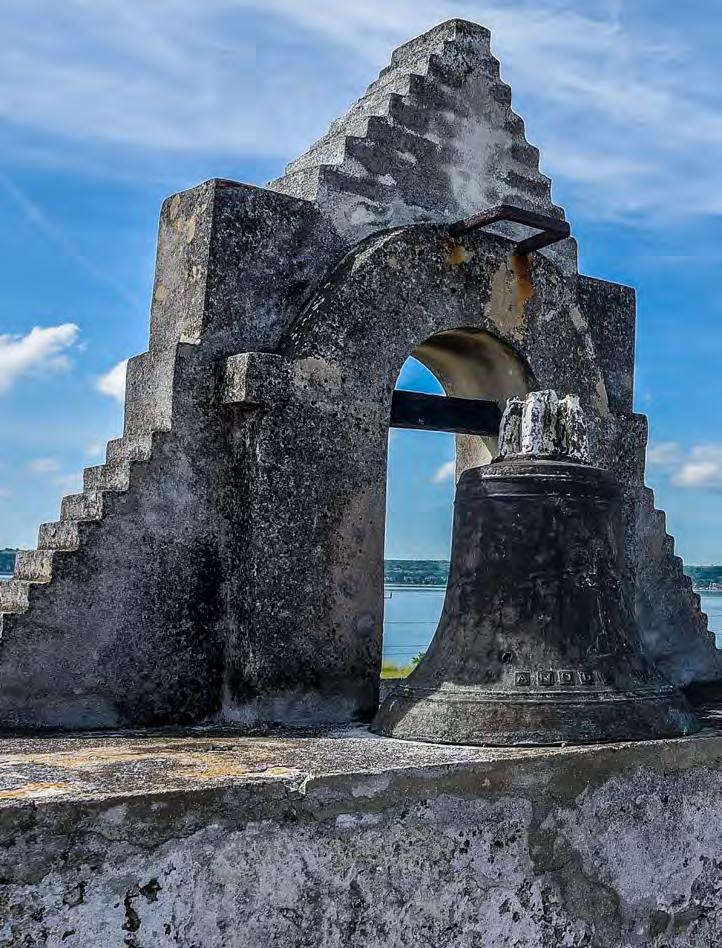
«SAN CARLOS Y SAN SEVERINO DE MATANZAS
San Carlos and San Severino de Matanzas»
El sol apenas irradiaba el Abra del Yumurí la mañana de aquel 12 de octubre de 1693, cuando en las márgenes de la Bahía de Guanima se fundaba la Villa de San Carlos y San Severino de Matanzas.Trescientos veintiocho años después no han sido pocas las transformaciones que ha afrontado la ciudad. Cuenta la historia que, hasta esa localidad, y por orden expresa del Rey Carlos II, llegó la encomienda de fundar una villa con familias de origen canario, para aprovecharlas riquezas geográficas y naturales que ofrecía tan excelso paisaje.
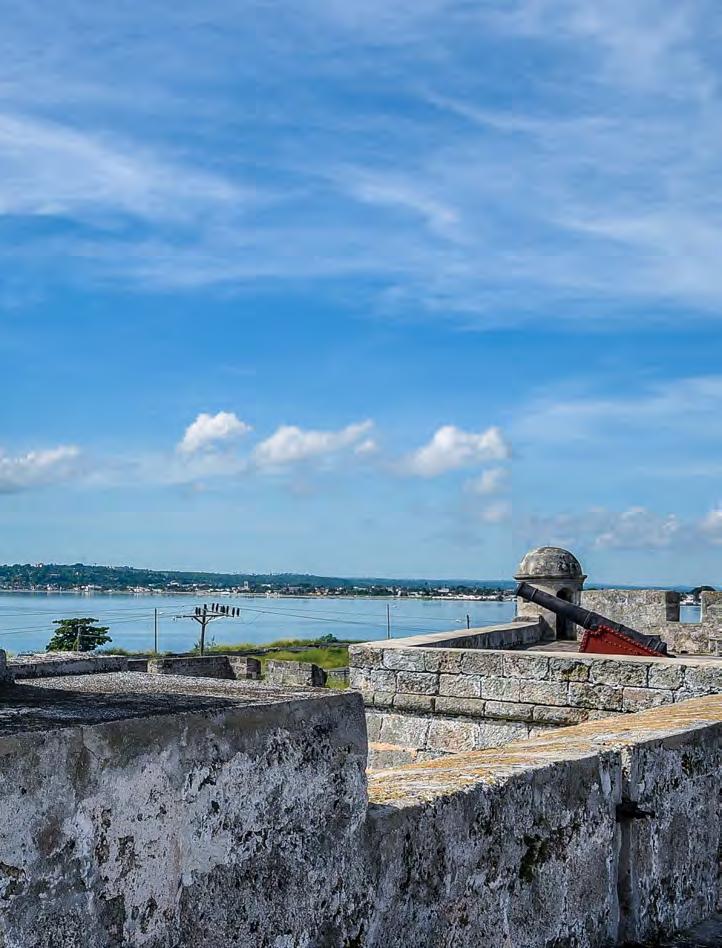
The sun was barely shining on the Abra del Yumurí on the morning of October 12th, 1693, when the Village of San Carlos and San Severino de Matanzas was founded on the shores of Guanima Bay. Three hundred and twenty eight years later, the city has undergone many transformations. According to history, by express order of King Charles II, a commission was given to found a village with families of Canary Island origin, to take advantage of the geographical and natural resources offered by such an exceptional landscape.
Textos y fotos/Texts and photos: Bienvenidos
La rebeldía de Guayucayex
En el año 1510, y producto de un fatídico naufragio, llegaron hasta los límites de la bahía un grupo de hispanos en busca de cruzar al otro lado de la rada. Pidieron así a un grupo de aborígenes del pueblo yucayo, establecido en la zona, que les cruzaran en sus canoas para seguir su camino en busca del conquistador Pánfilo de Narváez, que venía desde el oriente de la isla con sus huestes. Liderados por el cacique Guayucayex comienzan la travesía y una vez en la zona más profunda de la masa de agua, aquellos españoles fueron golpeados y volcados de las canoas por los nativos, yendo a parar al fondo del mar, con sus pesadas armaduras. Del fatídico suceso solo sobrevivieron tres ibéricos: un hombre y dos mujeres. Rescatados a la postre de su cautiverio, contaron al Fray Bartolomé de Las Casas lo ocurrido en aquel lugar, que, luego de una misiva enviada por el gobernador Diego Velázquez al Rey de España, comienza a llamarse “Bahía de las Matanzas”. Este hecho, que dio nombre también a la actual provincia de Matanzas, está considerado por la historiografía como el primer acto de rebeldía de los aborígenes cubanos y uno de los primeros del continente americano.
The rebellion of Guayucayex
In the year 1510, and product of a fateful shipwreck, a group of Hispanics arrived to the limits of the bay in search of crossing to the other side of the inlet and asked a group of natives of the Yucayo people, established in the area, to cross to them in their canoes to continue their way in search of the conqueror Pánfilo de Narváez, who was coming from the east of the island with his armies. Led by the cacique Guayucayex, they began the crossing and once in the deepest part of the water body, the Spaniards were beaten and tossed out of the canoes by the natives, ending up at the bottom of the sea, with their heavy armor. Only three Iberians survived the fateful event: one man and two women, who were eventually rescued from captivity and told Fray Bartolomé de Las Casas what had happened in that place, which, after a letter sent by Governor Diego Velázquez to the King of Spain, began to be called "Bahía de las Matanzas" (Bay of the Slaughters). This event, which also gave name to the current province of Matanzas, is considered by historiography as the first act of rebellion of the Cuban aborigines and one of the first in the American continent.
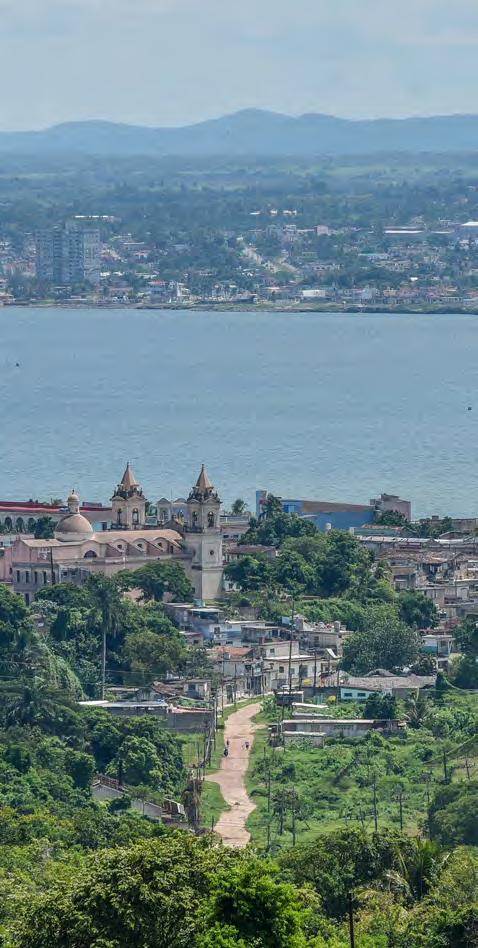
La ciudad moderna
Desde sus cimientos, en el año 1693, la urbe matancera estuvo cargada de primicias que la hacen única e incomparable en la región. Considerada la primera ciudad moderna de América -dados los criterios utilizados para su fundación- fue pensada, dibujada y planteada en el terreno antes de recibir a sus primeros pobladores. Entre los aspectos que la hacen notable destaca cómo se tuvo en cuenta la trayectoria solar para el trazado de la ciudad. Prueba de ello son las viviendas del casco histórico, donde todas sus edificaciones son bañadas por la iluminación del Astro Rey en alguna hora del día. Otra característica valiosa es que en las mañanas y en las tardes, según la estación en el calendario, la estrella cubre con sus rayos las tres principales calles de la ciudad: Milanés, Contreras y Medio. Nombrada desde el año 1860 como “la Atenas de Cuba”, es la cuna del baile nacional: el Danzón. Ejecutado por vez primera en una las más conocidas elevaciones con que cuenta su terreno y nombrada así su primera pieza, Las alturas de Simpson, de la autoría del maestro Miguel Faílde.
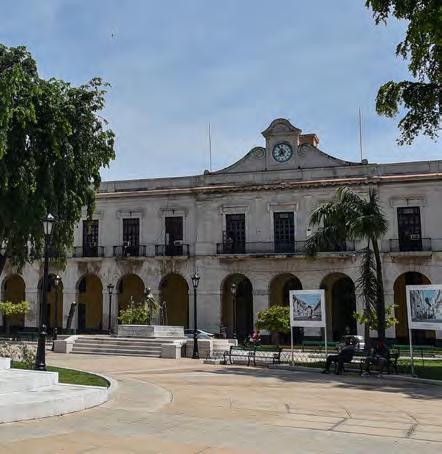
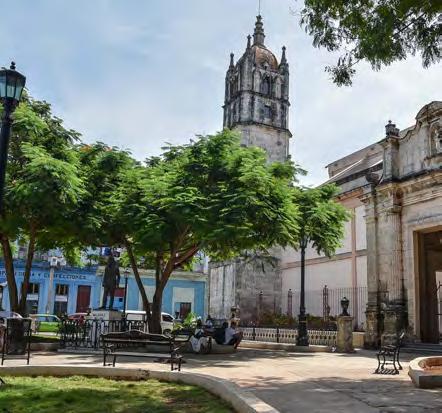
The modern city
From its foundations, in the year 1693, the city of Matanzas was full of novelties that make it unique and unparalleled in the region. Considered the first modern city in America - given the criteria used for its foundation - it was designed, drawn and planned on the ground before receiving its first settlers. Among the aspects that make it remarkable is the way in which the solar trajectory was taken into account for the layout of the city. Proof of this are the houses in the historic center, where all the buildings are bathed by the light of the sun at some time during the day. Another valuable characteristic is that in the mornings and afternoons, according to the season, the star covers with its rays the three main streets of the city: Milanés, Contreras and Medio. Named since 1860 as "the Athens of Cuba", it is the cradle of the national dance: the Danzón. First performed on one of the most famous heights of its area, and so named its first piece, Las alturas de Simpson, written by the master Miguel Faílde.
La ciudad de los puentes
Es difícil hablar de Matanzas y no referirnos a sus puentes. Con un total de 24 en toda su área, la otrora “Ciudad de los Puentes” o “Venecia del Caribe” cuenta con tres grandes afluentes: el Yumurí, el San Juan y el Canímar, que cruzan y delimitan algunas de sus barriadas más populares: La Marina, Versalles y Pueblo Nuevo. Entre sus puentes más relevantes aparece el centenario “de la Concordia”, llamado así por ser edificado, como lo conocemos hoy, luego de numerosas trifulcas entre franceses y españoles asentados en la zona, que lo destruían indistintamente para evitar el paso de los otros hacia la rivera opuesta. Cuenta con un valor agregado pues debido a lo peculiar de sus columnas, son estas el símbolo de la urbe.
Majestad humilde
La ciudad no deja de impresionar a quienes la visitan. El majestuoso Teatro Sauto, ubicado en las cercanías de la plaza fundacional, surge como un coloso neoclásico para plasmar en la imaginación del visitante la grandeza de esta villa tricentenaria. De Matanzas queda mucho por decir: la rica herencia afrocubana; sus días de esplendor azucarero; las Cuevas de Bellamar; su castillo de San Severino; la Ermita de Monserrate; el Estadio Palmar de Junco; sus títeres; sus poetas… Y precisamente con unos versos de Canto a Matanzas, obra de la poetisa Carilda Oliver Labra -una de sus más ilustres hijas- dejamos la invitación a visitar esta hermosa ciudad.
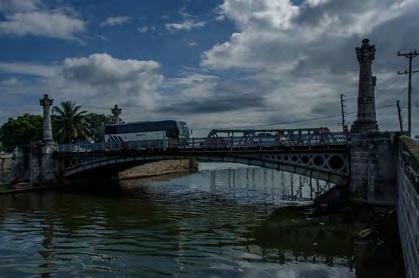
The city of bridges
It is difficult to talk about Matanzas and not refer to its bridges. With a total of 24 in its entire area, the once "City of Bridges" or "Venice of the Caribbean" has three major rivers: the Yumurí, the San Juan and the Canímar, which cross and delimit some of its most popular neighborhoods: La Marina, Versalles and Pueblo Nuevo. Among its most important bridges is the centennial "Puente de la Concordia", so called because it was built, as we know it today, after numerous quarrels between French and Spanish settlers in the area, who destroyed it indistinctly to prevent the passage of the others to the opposite bank. It has an added value because its columns are the symbol of the city due to their peculiarity.
Humble majesty
The city never ceases to impress those who visit it. The majestic Sauto Theater, located near the foundational square, rises like a neoclassical colossus to capture in the visitor's imagination the greatness of this three-hundred-year-old village. Much remains to be said about Matanzas: the rich Afro-Cuban heritage; its days of sugar splendor; the Bellamar Caves; the San Severino Castle; the Monserrate Hermitage; the Palmar de Junco Stadium; its puppets; its poets... And precisely with some verses of Canto a Matanzas, a work by the poetess Carilda Oliver Labra -one of its most illustrious daughters- we leave the invitation to visit this beautiful city.
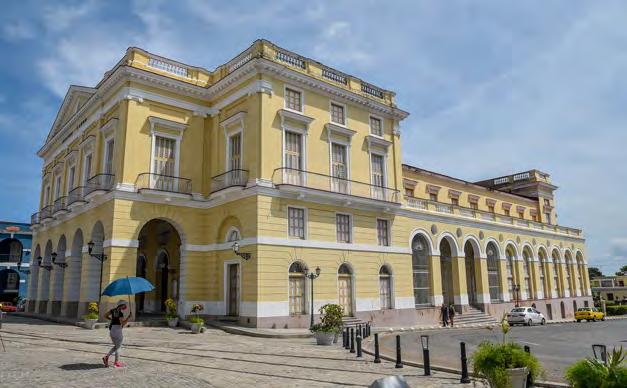
MATANZAS: BENDIGO AQUÍ TUS MALECONES MOJADOS, LOS ÁRBOLES DESTERRADOS DEL PASEO DE MARTÍ Y EL ECO EN EL YUMURÍ. Y VAN MIS LÁGRIMAS, VAN COMO PERLAS CON IMÁN O COMO ESPEJOS COBARDES A VACIAR TODAS LAS TARDES SUS AGUAS EN EL SAN JUAN.
